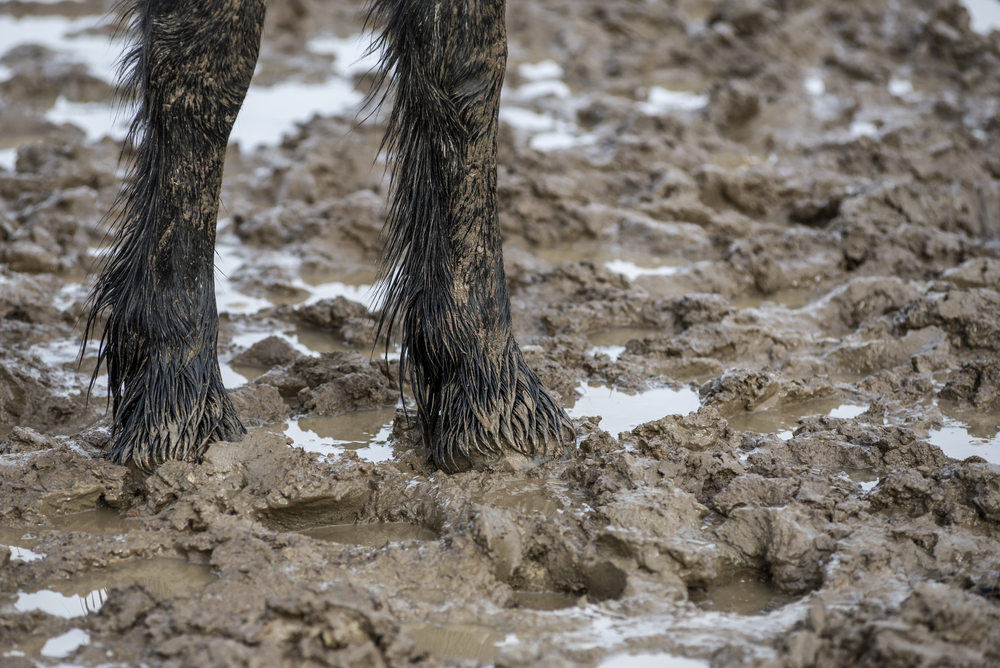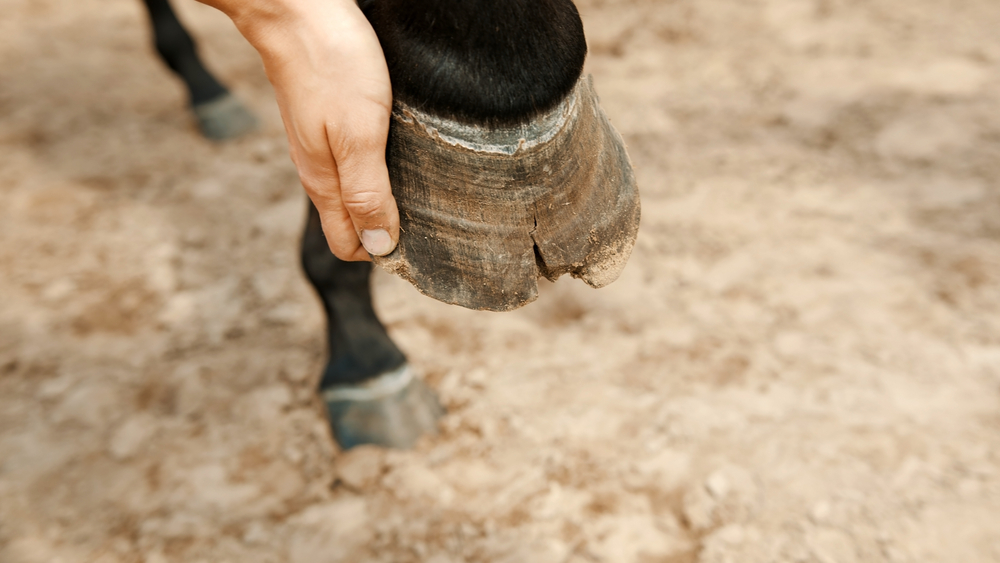Tuesdays with Tony
We sure have been getting a lot of rain around here lately. As you know, we cats are not fond of rain, and now all my favorite sunbathing spots in the clinic parking lot have become puddles! Yeah, yeah we need the rain to grow grass, but the daily thunderstorms and high humidity can wreak havoc on your horse’s feet.
Horses evolved on dry, grassy steppes… not a lot of swampland or rain there, so their feet didn’t evolve a good water management system. The repeated wet-dry cycles (or sometimes just wet) we have here cause the tubules that make up the hoof wall to suck up water and swell. When they release that water, the tubules shrink again, leaving empty space between the inter-tubular material and the tubules. This repeated cycle causes hoof walls to crack and split, and the soles to erode away. If your horse has shoes on, it makes those pesky nails loosen way before the next scheduled farrier visit. Let’s talk about the various moisture-induced hoof conditions my docs are seeing a TON of lately, and what you can do about them.

Thrush
You know the smell. That rotting, nasty smell that you notice while picking your horse’s feet. You may also see some dark black or gray gunk oozing from your horse’s soft frog, or the deep sulci (clefts) around the frog. Thrush is caused by a mixture of several bacteria that love wet, oxygen-poor environments, like the deep grooves in your horse’s muddy feet. Horses aren’t usually very lame unless it gets really bad, but you’ll want to treat it before that happens. Luckily, with daily cleaning and application of a topical treatment, you can control thrush.
There are a variety of commercial products you can buy at the tack store to treat it. One of my doc’s favorite home-made treatments is a mixture of copper sulfate crystals and either wax or Desitin cream. My doc buys a toilet bowl wax ring from the hardware store (or Amazon) and uses bits of that mixed with the copper sulfate. It’s cheap, and it sticks to the foot like a cat to a tuna can. It’s important to pick out the feet so the treatment can contact the damaged tissue really well. Whatever product or treatment you’re using, apply it all over the frog and into the deep cleft in the center of the frog. Repeat once a day in the beginning, and as you get it under control, you can space it out.
Mushy Foot
This is a disorder that my docs see regularly here in Florida in times of wet weather. The entire sole gets soft, thin, and crumbly. You may see a depression just behind the toe where the sole compresses (it can even hold a small pocket of dirt). If you press the sole with your fingers, you may be able to slightly move it. Soles like that aren’t nearly strong enough to take the weight of a horse and protect the bones inside his foot. Mushy foot can be really painful for your horse and can look as bad as laminitis.
During this season of frequent rainfall, your horse may need to spend some time every day in a dry area like a clean, bedded stall, to allow his feet some time off the moist grass. Remember that even if it’s not actively raining, a grassy pasture can keep the feet wet from the dew and rain it holds on to. You’ll want to pick your horse’s feet out every day.
The best topical treatment out there for “Mushy Foot” is daily application of Durasole (my docs carry it in their vehicles). Durasole contains drying and strengthening agents that thicken and harden the sole in a short period of time. Apply it every day until the sole is harder and the horse is more comfortable, then you should be able to decrease to 2-3 times a week. Work with your farrier to make sure your horse’s feet are trimmed on a 4-6 week schedule to promote healthy soles and hoof walls. If your horse is really sore, my doc may suggest he wear padded boots to temporarily cushion his feet until they start to improve. She won’t want him to stay in the boots for too long though, since the inside of a boot can be a moist environment as well.
Hoof Cracks and Abscesses
Another foot problem my docs see in this weather is cracked, crumbling hoof walls. As always, the first line of defense in keeping your horse’s hooves intact is regular trimming by a knowledgeable farrier. Too-long or unbalanced hoof walls put extra pressure on hooves that are already weakened by wet weather, and can cause those cracks to start or chunks to flake off. Along with avoiding muddy pastures, be careful how often you wash your horse, as that’s just additional moisture he’s standing in.

Abscesses are also common this time of year since soft, mushy feet allow easier entry for bacteria. A sudden onset of severe lameness is the most common presentation, but since that could mean other problems too, you’ll want to have my docs out to examine your horse. Also check out their YouTube video on how to make a hoof bandage so you’re prepared to manage this common problem!
Proper Diagnosis, Proper Treatment
If you suspect your horse may have any of these foot problems, give one of my docs a call for an exam. There are more serious conditions (such as laminitis) that can masquerade as one of these conditions, and an expert evaluation is highly recommended. You can even come find me here at the clinic for a “Cat-Scan”… but if it’s raining, don’t expect me to greet you outside!
Until next week,
~ Tony
P.S. If you want more, the humans have a podcast called Straight from the Horse Doctor’s Mouth, and they have several episodes on feet. I highly recommend you check that out, which you can do over on the Podcast Page of my website, or you can subscribe to it on Spotify or wherever you get your podcasts.
Tuesdays with Tony is the official blog of Tony the Clinic Cat at Springhill Equine Veterinary Clinic in Newberry, Florida. If you liked this blog, please subscribe below, and share it with your friends on social media! For more information, please call us at (352) 472-1620, visit our website at SpringhillEquine.com, or follow us on Facebook!
[jetpack_subscription_form title="Subscribe to Whinny's Wisdoms"]

